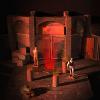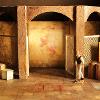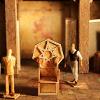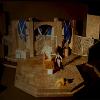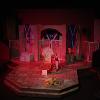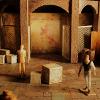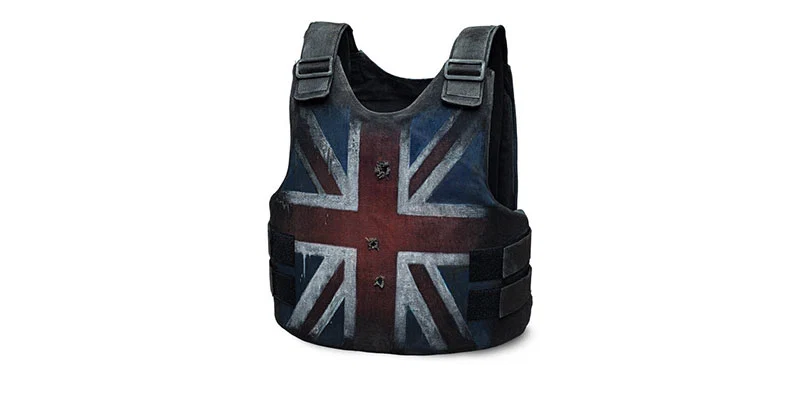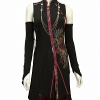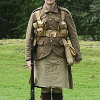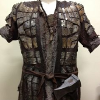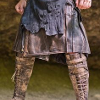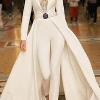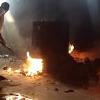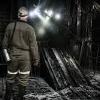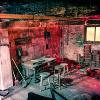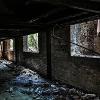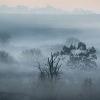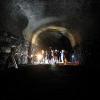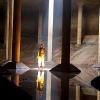
Student Playwright/Directors Meghan McGehee and Ian Boyd-Duncan
This is our final bonus materials release for the 2020-21 season and features playwright/directors Meghan McGehee and Ian Boyd-Duncan. Join these two talented students as they discuss what it's like to write and direct for the podcast season, as well as hear about some of their other experiences with K-State Theatre. The Student New Works podcast, featuring McGehee's Hate the Player and Boyd-Duncan's Styx will be released on May 6.
Alumni Interviews--Charissa Bertels and Tim Aumiller
This week we have interviews with Charissa Bertels and Tim Aumiller. Hear them talk about their career paths as well as how they came to write musicals. Songs from Charissa's The Uncivil Ones and Tim's The Year After were featured as part of IN PROCESS: Creating Songs for the Stage produced by K-State Theatre which was performed in Memorial Stadium on April 9-10; a recording of that performance will be released as part of the KTW Podcast season on April 29.
Alumni Interview--Travis Cloer
Travis Cloer is a Broadway actor, Las Vegas performer, recording artist, and father of two. He talks about taking risks, leaving it all in the audition room (or on the audition tape) and how to turn times of uncertainty into opportunity. A re-share from Associate Director Jennifer Vellenga's podcast "Ditch Your Backup Plan".
Almumi Interview--Logan Jones
Alumnus Logan Jones shares how he went from being an unpaid apprentice to becoming a full-time theatre artist in the Chicago theatre scene in the span of just five years; spoiler–it has a lot to do with saying yes to every opportunity, and finding mentors who support a path of lifelong learning. A re-share from Associate Director Jennifer Vellenga's podcast "Ditch Your Backup Plan".
Opera Workshop--selected scenes from Fall 2020
Performances from the fall 2020 Opera Workshop students. Join us for scenes from The Magic Flute, The Pearl Fishers, Carmen, T he Merry Wives of Windsor, and How to Succeed in Business Without Really Trying .
Playlist:
00:45 The Magic Flute
7:50 The Pearl Fishers
13:44 Carmen
21:20 The Merry Wives of Windsor
25:03 How to Succeed in Business Without Really Trying
Interviews with Design, Tech, and Management Theatre Faculty
Join Ben Stark, Dana Pinkston, James Kyle Davis, and Kathy Voecks as they discuss what they do, what inspires them and how they got started in theatre.
Bonus Podcast Interview with the creators of Jazz District
Join K-State alumni Logan Stacer (playwright) and Darrington Clark (director) as they talk about the process of creating the upcoming production of Jazz District.
FALL 2020 BONUS MATERIALS

Tis the Season!
Alumni writers from the Writer's Room talk about spoofing Christmas Carols, the collaborative process, and the best ways to listen to Ho Ho No!

A musical interlude to be grateful for!
Jackson Wilks interviews Alex Wakim ('18), composer of original music for Macbeth as well as our fabulous theme music.

Bonus podcast interview!
Brett Boline interviews playwright and alumnus Laura Camien and faculty director Jerry Jay Cranford about the true crime drama of One Dead, One Dying
Also, Dramaturg Dr. Shannon Skelton has put together some backround about the case that inspired the play.

Bonus podcast interviews!
Playwrights, directors, and actors talk about working on new plays and the exciting possibilities of audio theatre.
Tales of the Weird and Unusual will take you back to ghost stories told around the campfire on a brisk Halloween evening. Get your s'mores and hot cocoa ready, and maybe bring a friend to grab onto when things go BUMP in the night! |

| Student dramaturgs put together blogs about the plays in Tales of the Weird, linked below. These projects were created by students enrolled in the Theatre 630: Dramaturgy class taught by Dr. Shannon Skelton. Check them out...if you dare! |
Meghan McGeehee--Choke
Addie Price--Return To Abandoned
Hope Wedel—Kill Grimm
Hope's interview with playwright Blake Cordell
Dylan Foster--Leave No Trace
Dylan's interview with playwright Mitch Ward
Dr. Shannon Blake Skelton--Pr(a/e)ying Mantis and Her Velcro Voice
Dr. Skelton's interview with playwright Andrea Browne
Interview with playwright Cody O'Hare

Hear the director and designers talk about what might have been, COVID-19, and the design process.

It began back in December of 2019 (or something like an eternity ago)....when the production team, including director David Mackay, scenic designer Kathy Voecks, costume designer Dana Pinkston, and lighting & sound designer James Davis, first met to discuss the spring production of William Shakespeare's Macbeth. By spring break, much of the design work had been finalized, construction had begun on both the scenic and costume designs, and the lighting design was starting to take shape. Although we were forced to postpone, and eventually cancel, our in-person performance plans, we wanted to share the design work that had been done in the hope that it will give you additional insights into the world of the play that you hear in the recorded episodes.Set Design--Kathy VoecksThe set design for Macbeth was inspired by both historical and contemporary architecture and events. We chose to set the play in the near future, when a recent environmental disaster has destabilized the current order and allows Macbeth to make his grasp for power. The space is intentionally neutral, allowing for quick transitions between locations. Set pieces such as crates, oil drums, and sandbags would provide both a military environment and define changes in location. The architecture is meant to reference the medieval stonework of the period Shakespeare wrote about, but also feels timeless. Whatever catastrophe has turned the world upside down, it is recent enough that there hasn't been a total loss of infrastructure but resources are becoming limited which forces the armies to improvise in creating some of their necessities. In this environment, heraldry was to play an important part in defining power structures, with Duncan's old guard represented by the Scottish lion rampant and Macbeth the St. Andrew's Cross (Saltire). The lion rampant traditionally belonged to the Scottish monarchy, while the Saltire is the flag flown by Parliament and ordinary citizens. In our production, Duncan's power is waning, and as such, his insignia is faded and obscured by layers of paint. Macbeth's supporters would have modified it to reflect the new monarchy by adding the crown, dagger and monogram of their new king. In keeping with the haphazard and evolving structure of Macbeth's army, the new flags would be constructed out of blue tarps, white tape, and other found materials. With the defeat of Macbeth, Malcom would adopt Duncan's standard, but in a modernized form. |
Click on any of the images below to start a slide show of photographs from the set model created by Kathy Voecks©.
Costume Design--Dana PinkstonThe costume design for Macbeth developed from one image the director handed me early on:
This garment suggested so many of the aspects of the play, environment, and characters: violence, fading patriotism, weathered and decayed surfaces both literal and figurative, and a giant cross to aim at. My costume research stemmed from this image, and I explored costume, makeup, and hairstyles from a broad array of sources: Indigenous tribes of America, contemporary Scottish uniforms, goth, punk, cosplay and fashion straight from the runway. The men's costumes became based on the idea of a milder post-apocalyptic warrior; one that wears the kilt with a tactical vest, coming straight from bloody, dirty fighting. There are tattoos of numbers, medals of found objects, but also an obvious military uniform that all men wear. Other aspects of the design were to give the women pants that allow them to move freely and forcefully while juxtaposing them with the men in kilts. The Weird Sisters were young women scavengers, enjoying rotten discarded garments that they keep adding to as they find totemic objects. |
|
In a world of dirt, dust, and little water, the ability to wear a snow-white garment illustrates the importance and power of the wearer. Therefore, once crowned, The Macbeths are dressed in white. As the ghost of Duncan appears, he too is dressed in white. Had the design been fully realized, the costumes would have helped display a dying world filled with morally dying characters. Costume renderings by Dana Pinkston© |
Lighting Design--James DavisLighting is perhaps the most ephemeral of the design fields. How can you communicate what light will look like on a surface, an actor, a costume? For a lighting designer, much of the work happens once the show has been in rehearsal and movement patterns have developed, but research images can help describe the color, quality and intensity of light in the early stages of the design process. In our reality, electricity still exists, but is limited in supply, so there are also places where the light comes from burning oil drums or other fire sources. There was a plan to incorporate realistic lighting sources in order to reinforce the atmosphere of this post-apocalyptic world. We had talked about the possibility of characters carrying flashlights, having lights built into scenic elements and other practical sources as ways to make the lighting part of the larger world of the play. These sources could also give more unexpected angles, colors and textures in the lighting. This is a frightening play, and lighting is a great medium to create unsettling effects. This can be emphasized by putting light sources at low angles, adding atmospheric effects like fog and haze, and creating strong shadows. Color can be used to create a sense of the hot, arid, desolate world these characters inhabit. Light can also be used to show shifts in location, allowing the audience to quickly understand the movement of characters from interior to exterior spaces. Here are a few of the research images compiled by lighting designer James Davis to illustrate possibilities for using light. |

Student dramaturg Donovan Wattsput together research on the play, production history, and biographical information about Shakespeare along with other interesting stuff to help illuminate the play. You can find all this over at his blog Mac-Beth-aroni and Cheese. Check it out! What is a dramaturg? Quite simply, the dramaturg is someone who researches all sorts of information that can be used by the production team, the actors and the audience to better understand the play. |
